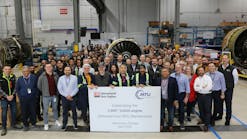Dec. 19--Airport security is under fire again after an 85-year-old New York woman complained this month that she was strip-searched. Federal officials denied the allegation. But two New York legislators are calling for the government to have a "passenger advocate" at every airport to deal with checkpoint issues.
Pat-downs continue to rankle some passengers. But other passengers say they are more concerned about the radiation from body scanner X-ray machines the government employs at many airports.
Safety advocates question whether the Transportation Security Administration should even be using X-ray machines, given that they increase cancer risk.
Sacramento fliers can breathe a half-sigh of relief on that account. The body-scanner machines the TSA recently installed at Sacramento International are not the X-ray type.
Sacramento has millimeter-wave machines, which do not use radiation and are supposed to be safe.
If you are at an airport, here is how you tell the difference: Millimeter-wave machines are upright plastic cylinders, looking a bit like space-age phone booths. You step inside them for a few seconds.
X-ray machines, also called backscatter machines, are often two rectangular panels you stand between, or one panel you stand in front of.
West Coast airports with X-ray machines include Los Angeles, San Diego, Oakland, San Jose and Seattle.
Airports with millimeter-wave machines include Sacramento, San Francisco, Las Vegas, Denver, Dallas and Portland. Ore. Burbank and John Wayne airports are getting millimeter-wave machines soon, TSA officials said.
The TSA says its most recent order this year of 300-plus body scan machines are all millimeter-wave type, none the X-ray type.
TSA spokesman Nico Melendez said that's because the company that makes millimeter-wave was quicker to switch to new software that no longer shows an image of the passengers' body on a monitor for agents to view. Instead, it shows a balloonlike body caricature. Yellow rectangles indicate foreign objects.
The TSA, however, may also be quietly trying to move away from X-ray technology in response to public concern about radiation exposure.
Notably, last month, European officials decided to remove X-ray machines from their airports.
By the way, you have the right to decline to use either machine, the TSA says. But that means you have to submit to a pat-down.
The TSA says you should inform the agent at the body scan machine. The pat-down usually takes place behind screens at the checkpoint.
The 85-year-old woman in New York, by the way, was taken to a separate room so agents -- two females -- could remove a back brace she was wearing to screen it separately.
Call The Bee's Tony Bizjak, (916) 321-1059.
Copyright 2011 - The Sacramento Bee, Calif.




